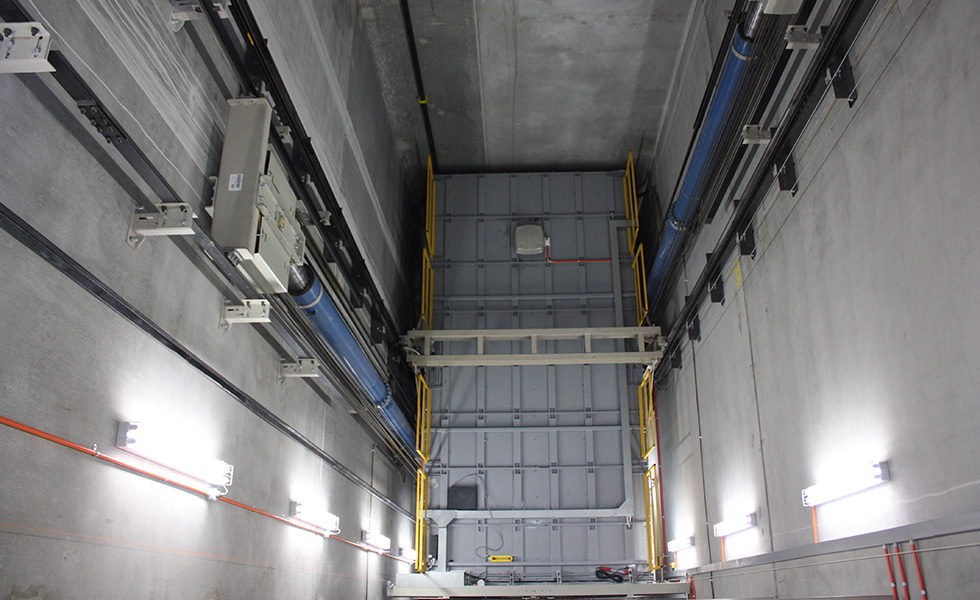A Detailed Technique to Enhancing Performance With Strategic Lift Repair Service Methods
In the realm of facility administration, the effectiveness and integrity of lifts play an essential duty in making certain smooth operations. A methodical and tactical strategy to raise repair work and maintenance is critical to take full advantage of performance and lessen downtime. By attending to typical lift concerns, implementing proactive upkeep procedures, and developing targeted repair plans, centers can enhance their lift systems to operate at peak performance levels. However, the key to accomplishing sustained enhancement exists in making use of data-driven insights to notify decision-making processes and drive constant enhancement. This extensive approach to enhancing lift efficiency with strategic fixing techniques holds the pledge of not only boosting operational effectiveness however additionally extending the life expectancy of lift systems.
Value of Lift Efficiency Optimization
Recognizing the relevance of enhancing lift efficiency is crucial for making certain reputable and efficient vertical transportation systems in different buildings and frameworks. Lifts are vital elements of contemporary infrastructure, offering upright flexibility for residents and goods within buildings of varying elevations. By enhancing lift efficiency, building owners and center managers can enhance customer experience, boost energy efficiency, and boost general functional efficiency.
Efficient lift efficiency optimization involves numerous aspects, including speed, capacity, energy consumption, safety and security, and upkeep demands. Properly enhanced lifts can lower wait times for users, specifically in high-traffic buildings, bring about boosted satisfaction and productivity. In addition, optimized lifts add to energy cost savings by making use of innovative control systems and modern technologies that minimize power consumption without compromising efficiency.

Identifying Common Lift Issues
Determining common lift concerns is essential for preserving the functional performance and safety of upright transportation systems in structures. This problem can be a sign of issues with the lift's electric motor, control system, or also the placement of the lift cars and truck.
Another widespread lift problem is weird noises originating from the lift shaft or equipment area. These noises can range from grinding or scraping noises to loud clunking noises, every one of which may indicate underlying mechanical concerns that need immediate focus. In addition, frequent door breakdowns, such as doors not opening up or shutting correctly, can interfere with the smooth circulation of guests and position safety dangers.
Carrying Out Proactive Upkeep Measures
To enhance the efficiency and longevity of lift systems, positive maintenance measures play an important role in making sure functional dependability and security. lift breakdown. Carrying out aggressive upkeep entails systematically evaluating, maintenance, and fixing parts prior to they stop working, therefore stopping expensive downtime and potential security hazards. Frequently set up evaluations can aid identify minor concerns before they intensify into significant troubles, eventually expanding the life-span of lift systems
One secret aspect of positive upkeep is developing a comprehensive maintenance routine based upon manufacturer suggestions and market finest practices. This timetable ought to outline jobs such as lubrication, placement checks, and component replacements at specified intervals. In addition, applying condition tracking methods, such as resonance analysis and thermal imaging, can aid discover early indicators of wear or breakdown.
Additionally, training upkeep team on correct evaluation techniques and preventive maintenance procedures is crucial for the successful execution of positive upkeep measures. By cultivating a society of positive upkeep within a company, lift systems can run at peak lift repair performance levels, decreasing disturbances and making certain the security of individuals.
Creating Targeted Repair Work Plans
Upon assessing the upkeep documents and performance data, the design team can establish targeted repair plans to enhance and resolve specific issues lift system functionality. These fixing plans are customized to the identified problems, ensuring that sources are focused on settling essential issues successfully. By prioritizing repairs based upon their effect on efficiency and security, the targeted repair service strategies aid reduce downtime and upkeep expenses while taking full advantage of the lift system's dependability.
Establishing these strategies entails a complete analysis of the lift system elements, including electric motors, wires, brakes, and control systems. Via this comprehensive evaluation, the design group can determine the source of any malfunctions or deterioration in performance. This info is then made use of to create a roadmap for the repair work process, outlining the required actions, timeline, and sources required to attend to each issue effectively.
Additionally, targeted repair plans may include preventative actions to improve the lift system's longevity and performance. By proactively dealing with prospective concerns prior to they rise, these plans contribute to the total performance and safety and security of the lift system.
Using Data-Driven Insights
Taking advantage of the power of data-driven insights is important in enhancing lift system efficiency and upkeep efficiency. By leveraging data analytics, lift drivers can make enlightened decisions that lead to enhanced functional effectiveness and price financial savings. Via the analysis of historical performance fads, data and patterns can be determined, making it possible for predictive maintenance strategies to be executed. These predictive upkeep approaches help avoid unanticipated failures, minimize downtime, and prolong the life expectancy of lift systems.

Conclusion
To conclude, maximizing lift efficiency is crucial for making sure effectiveness and safety in buildings. By determining usual lift problems, executing proactive maintenance procedures, establishing targeted fixing strategies, and making use of data-driven insights, companies can boost performance and reduce downtime. It is essential to take a detailed method to raise repair work methods to make best use of operational efficiency and make sure the longevity of lift systems.
By addressing typical lift issues, carrying out positive maintenance actions, and establishing targeted repair service strategies, facilities can enhance their lift systems to operate at peak performance levels.One more prevalent lift issue is weird sounds emanating from the lift shaft or equipment area.Upon assessing the upkeep documents and efficiency information, the design team can establish targeted repair strategies to maximize and attend to particular concerns lift system performance. By focusing on repair work based on their influence on efficiency and safety and security, the targeted repair service strategies help decrease downtime and upkeep costs while optimizing the lift system's reliability.
It is important to take an extensive approach to raise repair service methods to optimize functional efficiency and make certain the longevity of lift systems.